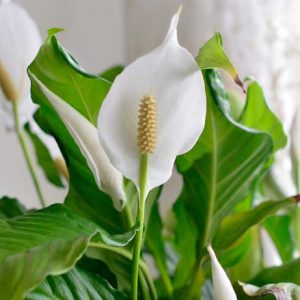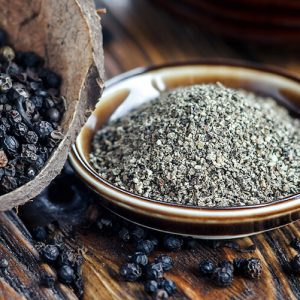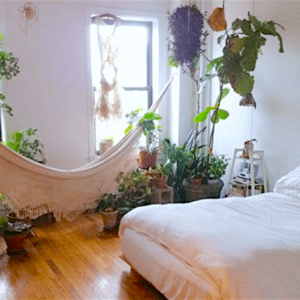
Plants are the lungs of the Earth, converting carbon dioxide to oxygen. Why not make your home or office part of that ecosystem? Indoor air-purifying plants remove pollutants from the air and improve the overall air quality around them. Better air means better health and less stress. Brighten up your desk or living room with one of these 7 clean-air plants.
Everyone knows that the aloe vera plant is useful for soothing scrapes and burns, but it also acts as a living air monitor and filter, cleaning formaldehyde and benzene from the air. When the plant begins to develop brown spots, it’s a sign that the indoor air quality has an excessive amount of harmful chemicals. Be sure to plant aloe vera in a sunny spot, such as a kitchen windowsill.
English ivy was named by NASA as one of the best air purifying plants. It is particularly good at absorbing formaldehyde, which is one of the most prevalent indoor toxins, as it is used in the manufacture of carpets and floorboards. English Ivy is a hearty plant and will grow with just medium sunlight in moderate temperatures.
The peace lily is as beautiful as it is healthy for your air. It is one of the few air-purifying plants that actually flowers. Peace lilies reduce benzene and acetone in the air, which are emitted from paints, adhesives, and some cleaners. The plant will do well in low light and requires only weekly watering. Dog and cat owners beware, however: it is poisonous to pets.
The heart-shaped philodendron is a popular choice for an indoor plant because they’re easy to grow and can last for years. Like other air-purifying plants, the philodendron is great at removing formaldehyde from the air. Give it moderate water and sunlight and it will grow long, healthy vines to stretch across your desk. Keep it out of reach from children and pets.
Golden pothos (also known as devil’s ivy) is popular because it’s so easy to take care of. Pothos will survive in low-light and cold temperatures with regular watering. Because the plant is so good at filtering carbon monoxide from the air, many people place the plant in mudrooms or garages where car exhaust is likely to linger. Pothos can be potted, placed in a hanging basket, or trained to climb.
If you have a difficult time remembering to take care of your plants, the spider plant was made for you. Popular for its resiliency, the spider plant fights several common pollutants including benzene, formaldehyde, carbon monoxide and xylene. The spider plant grows quickly, producing long grassy leaves and tiny white flowers.
The snake plant, also called mother-in-law’s tongue, is unique in that it converts carbon dioxide to oxygen at night, the opposite of how most plants breathe. This makes the snake plant great for the bedroom to provide extra oxygen while you sleep. The spider plant will thrive in low light and humid conditions, making it great for the bathroom, too.








The comments about the Snake Plant include a mention about conditions for the Spider Plant (which was the previous paragraph). Which plant are these the growinig conditions for:
“The spider plant will thrive in low light and humid conditions, making it great for the bathroom, too”??
Sorry, I am not sure what you are asking – the spider plant grows well in low light and humid conditions.
What about snake plant? And what’s the difference between these two? Thank you.
The Snake plant purifies air by absorbing toxins through the leaves and producing pure oxygen. So it would be beneficial!
What type of conditions do the snake plant like? I believe that is what the other poster is asking.
Snake plants are very resilient. They require very little care! You can find out all the stuff you need to know about snake plants here: https://www.almanac.com/plant/snake-plants
This information would give readers the ability to think twice before they select indoor plants in the homes to be placed. They would be guided what indoor plant to select.